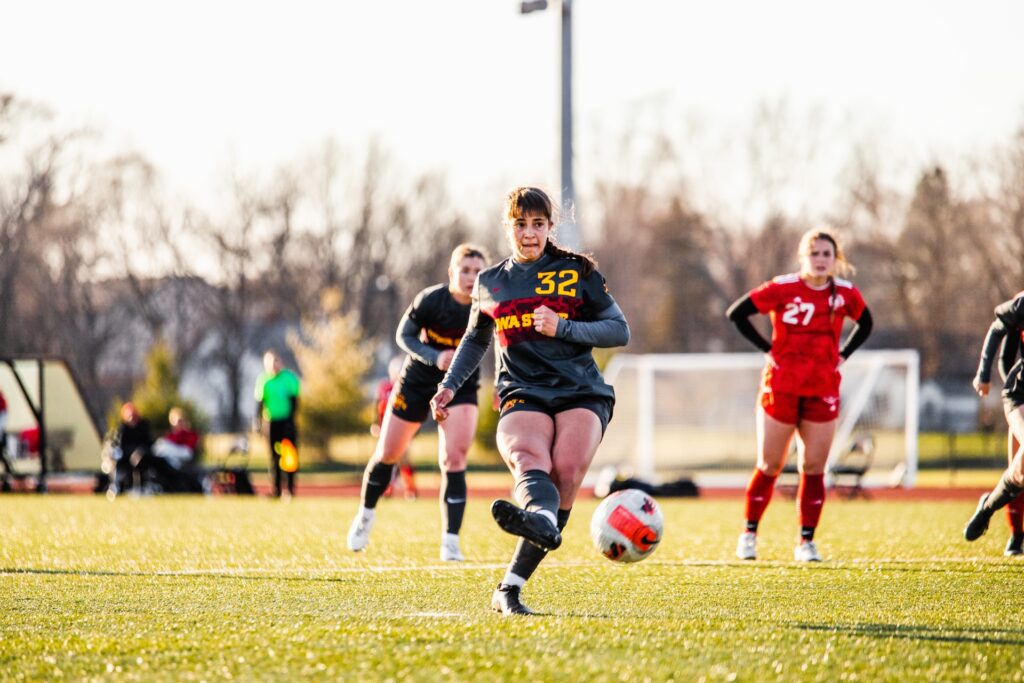Table of Contents
- What is a raumdeuter in soccer?
- Who is the raumdeuter role based on?
- How is a raumdeuter in soccer different from a trequartista?
- What are the benefits of deploying a raumdeuter?
- Who are the best raumdeuters in soccer?
- Recap: The raumdeuter in soccer
The days of the classic 4-4-2 being to automatic formation to select as a head coach are gone. Instead, savvy managers now look for creative ways to create chances and achieve find space in the opposition’s defensive third.
One role to look at when trying to achieve this is the raumdeuter, but what is it? And how does it work?
Here we will look into what the raumdeuter role is, whether it can benefit your team or not, and some examples of the role being deployed.
What is a raumdeuter in soccer?
A raumdeuter is the German name for what translates to a “space interpreter”.
The title is so clever that there’s almost comedic value to it. Imagine somebody whose moves off the ball are so effective and the channeled runs they make are incredibly shrewd – that’s a raumdeuter.
Exploiting space, good movement, and reading the game brilliantly are vital skills required to successfully being a raumdeuter.
This role (even though many people wouldn’t categorize these qualities alone as a role within a team) was difficult to tag until the term was conceived in the early 2010s.
Who is the raumdeuter role based on?
Not only is the role based on Thomas Müller, but he also coined the term ‘raumdeuter’ himself.
Müller will be the first to admit that his job within Bayern Munich and Germany teams is not straightforward to define. But what it offers is uniquely beneficial, which we’ll go into shortly.
Thomas Müller has an annoying habit, at least for his opponents anyway, of being in the right place at the right time. How he envisions the game and makes use of his energy is extraordinary.
It’s something you might only acknowledge the sheer brilliance of from within a stadium because he might be out of shot of the TV angles before becoming involved in the action.
Without being overly critical of one of the best soccer players of this generation, if you were to look at Müller and his highlights, you probably wouldn’t say that he has physical prowess or superior technical ability.
None of this matters because of how good he is off the ball, not to mention being a more than capable finisher too.
How is a raumdeuter in soccer different from a trequartista?
Raumdeuters are unusual; they are neither strikers, wingers, or midfielders, hence why they’re so difficult to define. Perhaps they are the best definition of a free role.
Although a trequartista has license to wander a little, the area they occupy is generally more defined than a raumdeuter.
A trequartista will typically be found in the “No.10” position, operating on the edge of the box looking to link up with midfielders and attackers alike.
However, a raumdeuter could be wide, they could be central, they could be advanced, they could drop deep, it really isn’t easy to say where they should be situated.
A trequartista is often credited with being a playmaker in their side. This isn’t the case for a raumdeuter who might be viewed as more of a poacher, latching onto crosses when space is found or intercepting a pass with clever movement.
Want to learn more about the fascinating role of a trequartista? Explore our article on it here.
What are the benefits of deploying a raumdeuter?

Because it’s difficult to pigeonhole where a raumdeuter lines up on the field, it’s challenging for opponents to know where to position themselves to neutralize him.
If you imagine this free role Müller has mastered, he roams from one spot to another depending where the most opportune position is on the field for him and his side. He’s likely to drag defenders all over the place who’ll try and cover him.
And if they aren’t dragged all over the place then the responsibility passes to the next player and keeping track of whose job it is can be difficult, much like the principles of zonal marking.
Also, when a cross is put into the penalty area, it’s likely that the target man striker will be marked by one or perhaps two players. However, because the role of a raumdeuter is almost covert, they can glide in to penetrate the space in the area and latch onto a cross.
Thomas Müller has made a career of poaching chances thanks to his agility and efficient finishing.
Who are the best raumdeuters in soccer?
The best and most obvious example of a raumdeuter in soccer is the aforementioned Thomas Müller. The Bayern Munich talisman created the role and coined its name too when discussing what he offers his side in an interview with German media over a decade ago.
His famed ability to find space late in the box, seen as a poacher who hides in plain sight, is not a coincidence. He has honed in on his skills to perfection, contributing massively to sustained success the Bavarians have had, such is his influence.
While his form has dropped over the last couple of seasons, prime Dele Alli was another example of how to play the raumdeuter role.
Showing up in all corners of the pitch, Alli would time his runs to perfection at Tottenham Hotspur and finish off numerous chances that would’ve otherwise been squandered.
Recap: The raumdeuter in soccer
While some soccer terms have been around for around a century or so, the raumdeuter is a contemporary classic that has become part of the fabric of soccer lexicon.
Understanding how the role works and spotting who undertakes it well means you can keep your eyes peeled the next game you attend.
Keen to learn more about the deployment of unique tactical roles on the soccer pitch? Check our our articles introducing the deep lying forward, mezzala, inverted winger, half back, and false nine!

